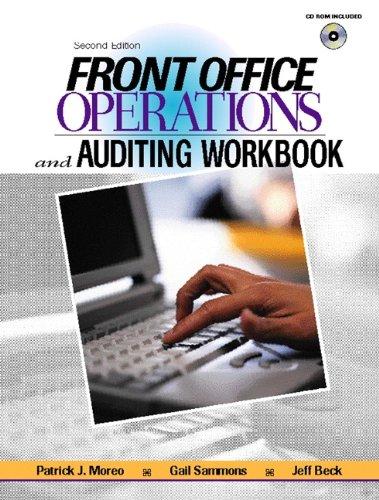Question
Article 1: International trainer perceptions of simulation-based learning: a qualitative study. Abstract: Objectives: This study examined trainer perceptions of simulation- based learning for Continuing Professional
Article 1:
International trainer perceptions of simulation-based learning: a qualitative study.
Abstract:
Objectives: This study examined trainer perceptions of simulation- based learning for Continuing Professional Development in international settings. Methods: A qualitative research methodology was used to gain insight into trainer perceptions. Seventeen international physician trainers involved in simulation training in cardiovascular catheterization and intervention were interviewed. An inductive thematic analysis was performed following steps described by Braun and Clarke; researchers inductively approached, and then carefully dissected the transcripts into individual stories, grounded the problems, and explored themes. Results: Trainer perceptions are largely aligned with learning theories, even though they were not specifically educated in simulation-based learning and program design principles in advance. Trainers perceive their primary role as facilitators to be most important and consider structuring sessions, facilitating group learning, and stimulating reflection to be crucial themes in simulation-based learning. They believe that building trust is an underlying principle to function in their role and feel responsible for being prepared to improve trainee satisfaction as adult learners. Trainers believe that learning from making mistakes is an important mechanism in simulation-based learning, but they give less attention to giving feedback. Conclusions: Trainers with basic training in facilitation skills in a classroom may unconsciously follow teacher-student instructional models with which they are familiar. This study confirms that trainers in simulation-based learning need pedagogical and facilitating skills to guide trainees and facilitate group processes. Educational training for trainers should include building trust and giving feedback in a more explicit place. In future studies, a mixed-method methodology is suggested to evaluate multi-layered complexities of educational practices.
Question 1
Write a report in which you analyse EACH of the pre-selected research articles to identify and
discuss the research paradigm and design the authors followed, and then explain how this
informed the decisions made by the researchers. Then, applying critical thinking skills, you will
need to consider alternate research methods, and motivate your choices using sources beyond
your textbook.
Q.1.1 Identify the paradigm/tradition for each article. You will need to motivate each choice of paradigm using examples from each of the articles as well as a critical discussion of each of the paradigms chosen.
Q.1.2 Identify the following elements of the research design for each article. You will need to motivate using examples from each article, as well as theory from various sources.
Q.1.2.1 Research methodology.
Q.1.2.2 Type of research.
Q.1.3 Identify the population and sampling types and methods used in each article.
Q.1.3.1 Using examples from each article, as well as theory from the prescribed text, describe the population and sampling methods used in each study. Each answer should outline the target and accessible population, population parameters, unit of analysis and sampling method.
Q.1.3.2 For each article, using appropriate theory, argue in favour of an alternate sampling method, that aligns with the same paradigm/tradition and research question.
Q.1.4 Identify the data collection methods used in each article.
Q.1.4.1 Using examples from each article identify the data collection methods
used in each study. Motivate each answer with examples from each article as well as theory from various sources
Q.1.4.2 For each article, using appropriate theory, argue in favour of an alternate data collection method, that aligns with the same paradigm/tradition and research question.
Q.1.5 Identify and describe the data analysis method in each article. Each answer should be a combination of examples from the articles as well as theory from various sources
Question 2
Demonstrate your understanding of paradigms, methodologies, and research practicalities by
considering the impact on each study were the authors to use an alternate paradigm to that
represented in the original articles. You will need to select a different alternate paradigm for each research article, so there are no duplicate paradigms in your three chosen alternatives.
Q.2.1 For EACH research project, select an alternate paradigm. You may not use the same
paradigm for more than one article. For each alternate, consider the implications of this
change in paradigm on the nature of the research and construct new, alternate versions of
the following (for each article):
Q.2.1.1 The research problem (considering the five criteria for research
problem);
Q.2.1.2 The research question/s; (10)
Q.2.1.3 Formulate hypotheses and/or objectives based on the alternate paradigm selected.
Q.2.1.4 The data collection method (including a clear explanation of and motivation for choosing that data collection method);
Q.2.1.5 The data analysis method (including a clear explanation of, and motivation for, choosing that data analysis method).
Question 3
The overall purpose of research is to add to the body of knowledge using an ethical and systematic process. For each article:
Q.3.1 For each article, discuss how the researchers would have ensured trustworthiness and/ or reliability and validity when conducting the research. Your answer can be a combination of examples from the articles and theory from various sources.
Q.3.2 Critically discuss the ethical issues the researchers can be expected to have considered before, during and after the research process.
Step by Step Solution
There are 3 Steps involved in it
Step: 1

Get Instant Access to Expert-Tailored Solutions
See step-by-step solutions with expert insights and AI powered tools for academic success
Step: 2

Step: 3

Ace Your Homework with AI
Get the answers you need in no time with our AI-driven, step-by-step assistance
Get Started


